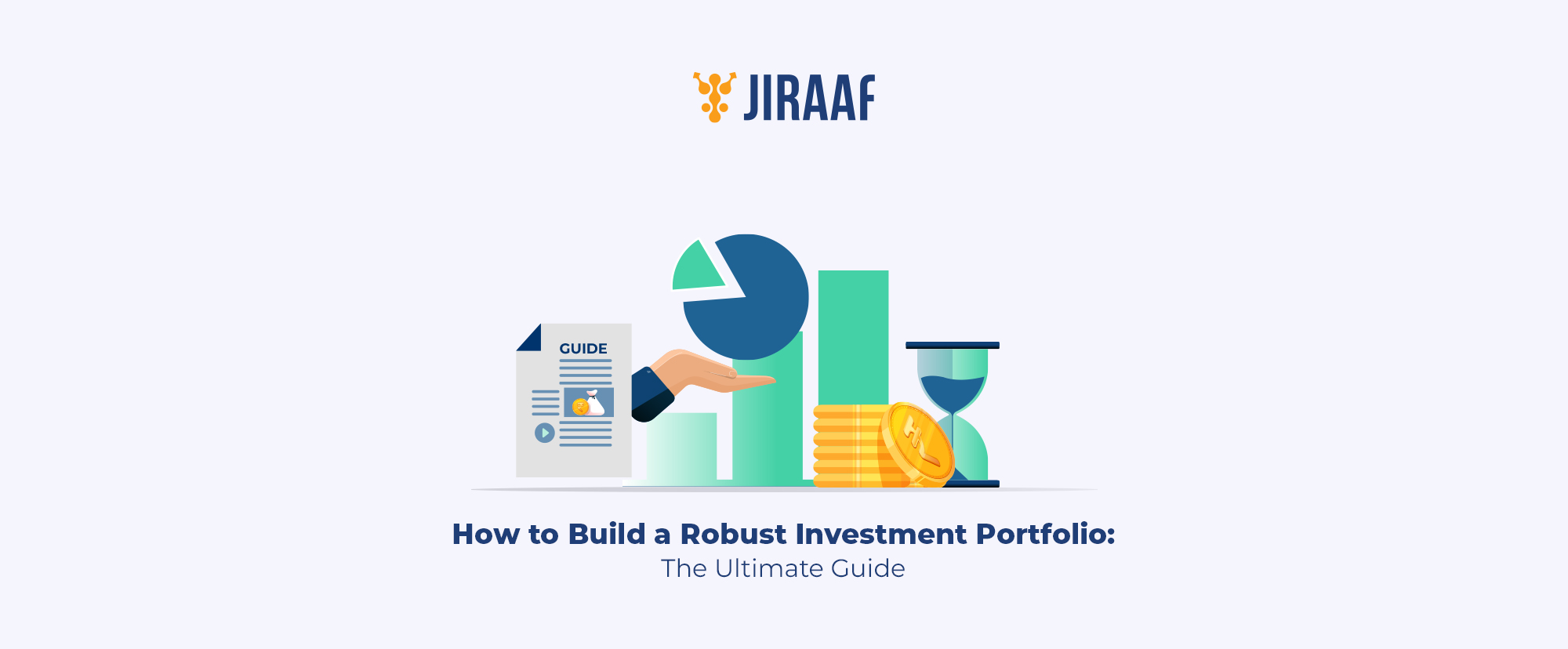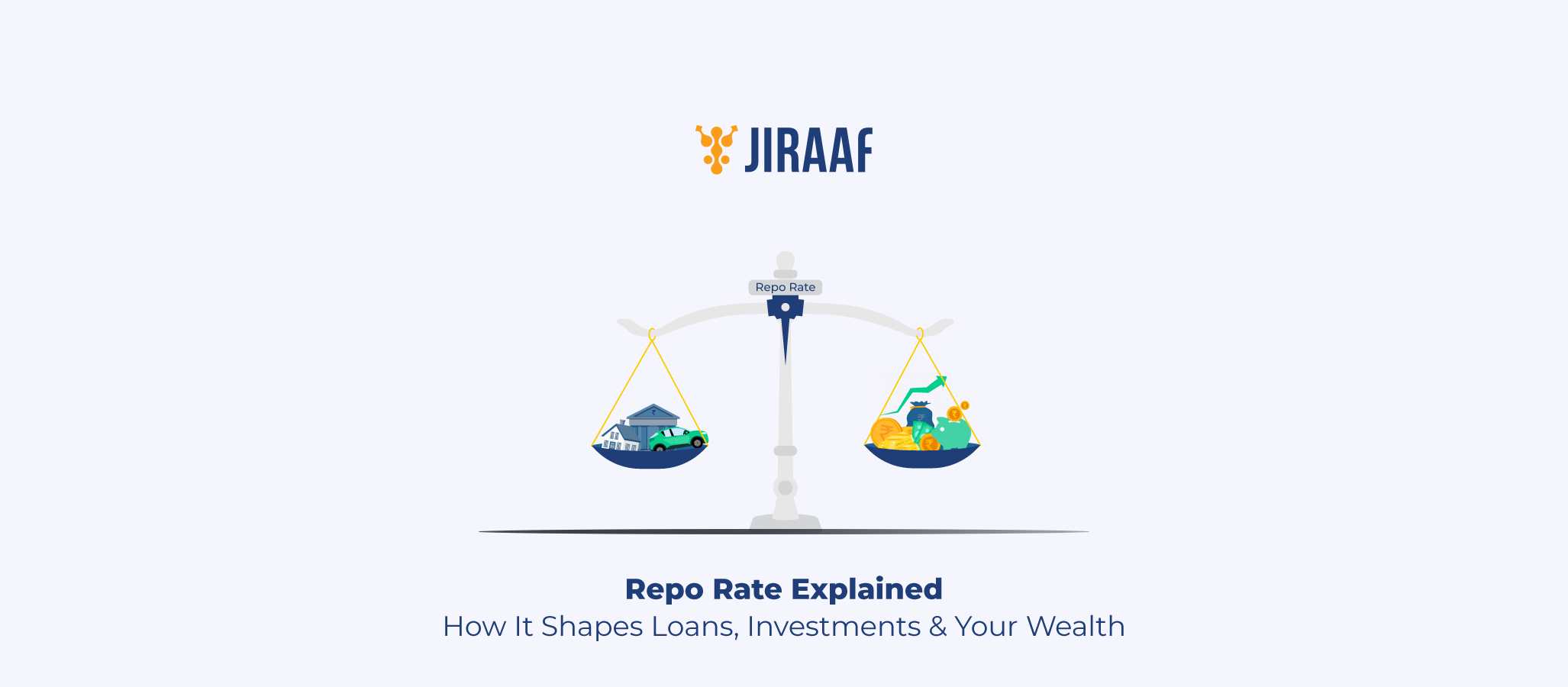An investment portfolio can have a diverse set of asset classes including stocks, bonds, and real estate. But what are these asset classes, how do you choose and mix them up, and how much should you allocate to each? Let’s explore the investment portfolio today, understanding its components and how to build one that aligns with your financial objectives.
What is an Investment Portfolio?
In simple words, an investment portfolio is a collection of different financial assets that a person or an organisation owns. The shape and size of a portfolio varies from person to person based on individual financial goals, risk appetite and investment horizon.
Types of Investment Portfolios:
1. Growth Portfolio
As the name suggests, a growth portfolio focuses on increasing the value of your investments over time and aims to promote growth by taking risks. This typically involves investing in stocks of companies that are expected to grow faster than others. These companies might involve young companies that have more potential for growth than larger/ established firms. However, this type of portfolio can be riskier as well because it depends on market performance.
2. Income Portfolio
An income portfolio aims to generate regular income for the investor, typically through dividends from stocks or interest from bonds. Inventors looking for steady cash flow without selling their holdings often prefer this type of portfolio. While it may not grow as quickly as a growth portfolio, it’s generally considered safer and more predictable, making it ideal for retirees or conservative investors.
3. Balanced Portfolio
A balanced portfolio offers a sweet spot between growth and income. It includes a mix of stocks for growth and bonds for stability and income. This balance helps reduce risk while still offering the potential for reasonable returns. It’s suitable for investors who want a blend of safety and growth, making it a versatile option for long-term financial planning.
4. Aggressive Portfolio
An aggressive portfolio is all about high risk and high reward. It’s heavily invested in stocks, often in emerging markets or start-up companies, where there’s a lot of potential for growth but also a higher chance of losses. This type of portfolio is typically for investors with a high-risk tolerance and a long-time horizon to recover from any market downturns.
Asset Allocation Strategies for an Investment Portfolio
Asset allocation is the strategy of dividing your investments across different asset classes, like stocks, bonds, and real estate, to balance risk and reward based on your financial goals and risk tolerance. Asset allocation helps you optimize your returns, while minimizing your risks, reducing the impact of a poor-performing asset on your overall portfolio.
Factors that Influence Asset Allocation:
- Age: Younger investors who have a longer investment horizon often lean towards higher-risk assets like stocks for growth, while older investors with a shorter investment horizon may prefer safer assets like bonds, FDs as they approach retirement
- Financial Goals: Long-term goals (like building a post-retirement corpus) might allow for more aggressive investments, while short-term goals (like buying a vehicle) usually require safer options
- Risk Tolerance: If you’re comfortable with market swings, you might choose more stocks. If you prefer stability, you may lean towards bonds and other low-risk assets
Common Asset Allocation Models:
- Income-Focused Allocation: An income-focused allocation prioritises generating regular cash flow through investments like dividend-paying stocks, bonds, and real estate investment trusts (REITs). The allocation typically leans heavily towards bonds and income-generating assets (typically, 70-80%)
- Moderate Allocation: A moderate allocation balances risk and reward, often with a 50/50 or 60/40 split between stocks and bonds. This approach allows for growth while still maintaining a level of stability
- Equity-Focused Allocation: An equity-focused allocation is almost entirely invested in stocks (90-100%), aiming for maximum capital growth. This strategy carries high risk due to the heavy stock exposure
Aggressive Investor vs Conservative Investor: Which one are you?
| Aspect | Aggressive Investor | Conservative Investor |
| Risk Tolerance | Investors comfortable with high levels of risk and significant market fluctuations | Investors who have a low risk tolerance, preferring to minimise exposure to market volatility |
| Investment Horizon | Typically have a long-term horizon (10+ years) to withstand volatility and capitalise on growth | Focuses on a shorter-term horizon or is nearing retirement, requiring a stable income or wealth preservation |
| Asset Allocation | Allocates a substantial portion to stocks and high-growth sectors for capital appreciation | Allocates a significant portion to bonds, FDs, and low-risk assets for stability and income |
| Return Expectations | Seeks higher potential returns and is prepared for significant short-term losses | Aims for modest, reliable returns and prioritises preserving the initial investment |
| Investment Strategy | Engages in active management and frequent trading to capitalise on market trends | Employs a passive management strategy with fewer trades and a focus on stability |
| Diversification | May diversify across high-risk assets and emerging markets to maximise growth potential | Diversifies primarily within low-risk assets to ensure consistent performance |
| Market Timing | Investors tend to make decisions based on short-term movements | Usually avoids market timing |
Rules of Investing
The golden rule of investing is that there’s no single, universal rule that applies to everyone. Investing is highly personal and should be tailored to your unique situation. This means there isn’t a one-size-fits-all approach. Instead, your investment strategy should reflect your individual income, expenses, financial goals, and risk tolerance.
How to Build an Investment Portfolio?
1. Define your Financial Goals
Begin by clarifying what you aim to accomplish with your investments. Whether you’re planning for retirement, saving for a home purchase, or funding your child’s education, having clear goals will guide the development of your investment strategy and determine your investment timeline.
2. Determine your Time Horizon
Consider how long you plan to invest before you need to access your funds. A longer time horizon generally allows for a more aggressive investment strategy, while a shorter time frame may require a more conservative approach to preserve capital.
3. Choose your Asset Allocation
Decide how to spread your investments across different asset classes, such as stocks, bonds, and real estate. Asset allocation is crucial for balancing risk and return. For instance, a common allocation might be 60% stocks and 40% bonds, but this can vary based on your goals and risk tolerance.
4. Diversify your Investments
Within each asset class, diversify your investments to reduce risk. For example, if you invest in stocks, consider including a mix of large-cap, mid-cap, and international stocks. Diversification helps protect your portfolio from significant losses in any single investment.
Investment Portfolio Management Tips:
1. Monitor Performance Regularly
Keep a track of your portfolio’s performance to ensure it meets your expectations. Regular monitoring allows you to identify any underperforming assets and make necessary adjustments.
2. Stay Informed
Stay updated on market trends, economic conditions, and changes in your investments. Being informed helps you make better decisions and adjust your portfolio in response to market movements.
3. Avoid Emotional Investing
Don’t let emotions drive your investment decisions. Making decisions based on fear or greed can lead to poor outcomes. Stick to your long-term strategy and avoid reacting impulsively to short-term market fluctuations.
4. Plan for Taxes
Consider the tax implications of your investment decisions. Be mindful of capital gains, dividend income, and interest, and use tax-efficient investment strategies to minimise your tax burden.
Investment Portfolio Case Study
Let’s look at Arnav Banerjee’s portfolio.
- 35-year-old software engineer, living in Bangalore
- Earns Rs. 2.5 lakhs per month after tax deduction
- Stays with his wife (a social worker) and a 2-year-old daughter in a rented house, and plans to buy a house although not anytime soon
- His parents are self-sufficient, so he has no financial responsibilities apart from managing his own home and family
- Arnav as a person is an aggressive risk-taker with investments
Now, we’ll see three different kinds of asset classes Arnav that should invest in. We will assume that he has liquid savings equal to six months of his monthly income and has plans to grow the wealth so he could own & add real estate to his portfolio.
From his income, after deducting all his expenses, let us assume he has about Rs. 1 lakh every month to invest as a family across the three asset classes.
Asset Class 1 – Equity
This consists of equity, mutual funds and direct stocks. Investments made in equity should always be made with a long-term horizon of 10 years with a minimum five-seven years possible holding period, since this asset class is volatile.
Depending on your age, your financial constraints, and your expenses, you can determine your risk appetite. And based on your risk appetite, you should decide how much equity you will want to keep in your portfolio. Higher the risk appetite, higher should be the portion allocated to equity.
In Arnav’s case, he earns well. And although he is an aggressive risk-taker psychologically, he is the primary breadwinner of the family, has financial responsibilities and has a daughter whose education needs will start in a year. His risk profile, therefore, is moderate.
But because he has a moderate risk profile, he should invest between 50-60% of his overall portfolio in equity, split across mutual funds and direct stocks. Equity investment per month for Arnav: 60% of portfolio = Rs. 60,000
Asset Class 2 – Debt
Debt products are those where you give a kind of loan to someone, and they return that to you with interest. These include products like fixed deposits, bonds, debt mutual funds, etc. While these products are less risky and less volatile than equity, they also give relatively lower returns compared to equity over the long term.
If you have any major expenses, milestones, or goals in the next 2-5 years, it is advisable to put it in debt or alternate assets (discussed later), as they generally give a fixed interest, so you can be sure of the return you’ll get, as well as the duration.
Since Arnav’s daughter is due for her schooling very soon, Arnav would need to plan for it so that he gets a predictable amount in a fixed duration. He can allocate about 20%-25% of his portfolio to debt, which can be in high-rated bonds. Debt investment per month for Arnav: 25% of portfolio = Rs. 25,000.
Asset Class 3 – Alternative Fixed-Income Assets
This is an interesting class of products which are safer than equity, but slightly riskier than pure debt. Some alternate asset classes are:
- Gold (physical, digital, SGB)
- Asset leasing
- Unlisted corporate and venture debt
- Invoice discounting (financing a vendor’s invoice temporarily until they get paid)
- Real estate (commercial real estate, REIT), P2P lending (lending to individuals at higher interest rates)
To get good returns from investments, alternate fixed income assets should ideally be about 15-20% of an investor’s portfolio. And in Arnav’s case, again, we can allocate 15% to alternate fixed income investment products like unlisted corporate bonds and invoice discounting that gives anywhere between 10-15% IRR. Alternate asset class investment per month for Arnav: 15% of portfolio = Rs. 15,000.
Conclusion
Different investment portfolios are tailored to suit various investor needs based on financial goals, risk tolerance, and time horizons. It’s essential to evaluate your personal requirements before selecting the portfolio that’s right for you.
As an investor, understanding your short-term and long-term goals, along with your risk profile, is key to building a portfolio that aligns with your objectives.
Discover fixed income investments with Jiraaf, a SEBI registered online bonds platform that educates and brings access to a wide array of bonds. Sign up today to explore diversified fixed income investment opportunities to support your goal-based wealth creation journey. Start investing!




